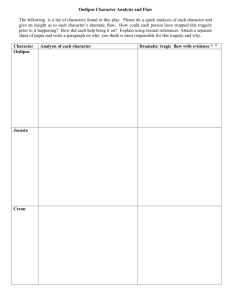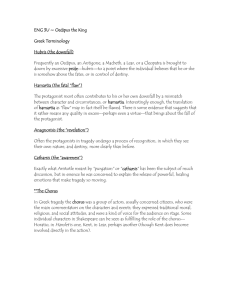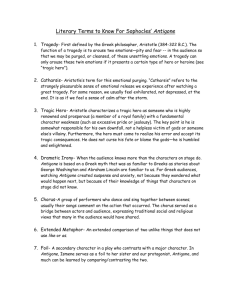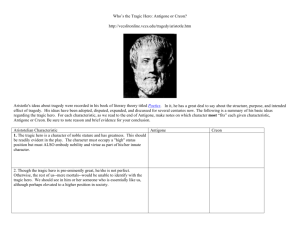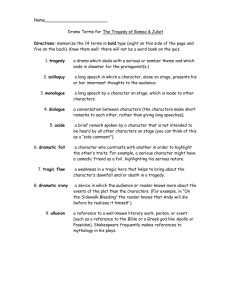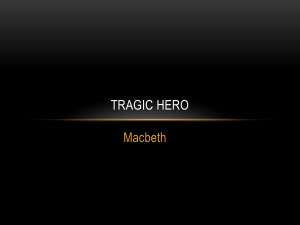Notes and Plan for Research Assignment
advertisement
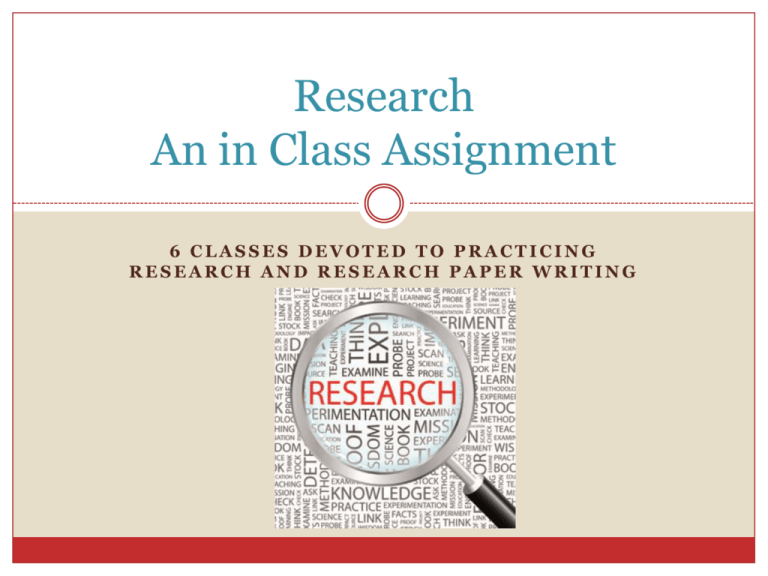
Research An in Class Assignment 6 CLASSES DEVOTED TO PRACTICING RESEARCH AND RESEARCH PAPER WRITING Schedule Class 1: Intro to Research and the Topic Class 2: Intro to note taking Class 3: Note taking and citing sources Class 4: Thesis, Outline and Reference Page Class 5: Rough Draft Class 6: Final Copy Class 1: Intro to Research and the Topic A research report: Presents factual information about a topic from a variety of sources Develops a single thesis Has intro, body and conclusion Presents ideas in organized way Credits sources appropriately Includes list of sources Step One: Choose The Topic We will provide the topic in the interest of time Typically do some preliminary reading and research before deciding Your topic: Antigone as an Aristotelian Tragedy (Side Note!)What is a Aristotelian Tragedy? See your first Source: “Aristotle and the Elements of Tragedy”: According to Aristotle a Tragedy (Write this down!): 1. Depicts a noble hero or heroine (could mean: royal, reputable, honorable) Depicts a character who brings about their own demise through some “fatal flaw” or “tragic flaw” (hamartia). This character is known as the “tragic hero.” The character suffers some great loss Loss of power, loss of family, loss of life, loss of soul, loss of friends, loss of self respect or respect in the community The hero does not have to die at the end, but comes to some recognition or revelation about human fate and the will of the gods. Tragedy (cont’d) Pathos: an element of plot in the tragedy. It means a “destructive or painful act” – the words sympathy, empathy and apathy all stem from this Greek word. This leads to Catharsis. Catharsis: tragedy raises the emotions of pity and fear and then purges them. We (the audience) feel pity and fear for the tragic figure and at the end we are moved by the experience and experience a sense of relief when it is resolved. Step 2: Tentative Thesis Statement What will you argue or prove about your topic? (as you progress you may alter your thesis) We’ve provided one! Antigone is (is not) a perfect example of an Aristotelian Tragedy (decide which side you will take) Now Your Turn Begin reading the sources provided Decide which side you will take on this topic: Antigone is or isn’t an Aristotelian Tragedy. Class 2 and 3: Finding Information Compile your information in an organized way: Note taking: Pick a subheading to gather information about for ex: “tragic flaw” Take jot notes from each source about this topic. Summarize important points. If you want to use exact words, place in quotes. RECORD WHERE THE INFO COMES FROM. Source name and pg. number Note Taking Continued Example of Notes Topic: The play Antigone is an Aristotelian Tragedy Sub Topic: Tragic Hero Source: Aristotle and the Elements of Tragedy (Ohio) Great man (noble), makes mistake, generally good and decent Mistake also known as hamartia - flaw or error, weakness Source: “Antigone’s Flaw” by Lines Character “we admire greatly” p. 2 Source: The Theban Plays by Sophocles (Penguin Classics) Creon is noble he is the “undisputed master of the city” p. 125 Outline An outline is a plan for how The information will be organized This is important for gathering appropriate information and achieving coherence. Do not skip this step! Outline Plan the order in which you will present your information For example: 1. 2. 3. 4. 5. 6. Introduction Hero/Tragic Flaw (hamartia) Hero Suffers a great loss Recognition/Revelation Pathos/Catharsis Conclusion Outline Cont’d You may include further subheadings to help plan the essay For ex: 1. Introduction Attention grabber Definition of Aristotelian Tragedy Thesis statement Baby Goat Break https://www.youtube.com/watch?v=JmGSCIy7-kk Step Three: Rough Draft (and citing sources) Give credit for each source you use. If you quote something directly word for word put “quotation marks around it” (Then the author, the year and page number in brackets). Make sure this reference is listed on your reference page at the end. See p. 4 in your booklet for example. Someone else’s idea in your own words Still needs a citation!!! Write in your own words but place the source at the end of the statement (the author, the year and page number in brackets). Step Four: References Reference page Written in APA style (see guide)
